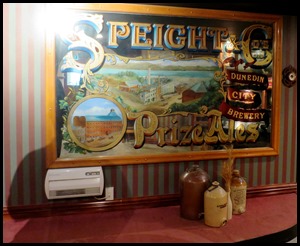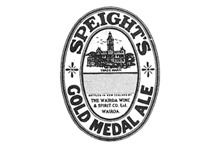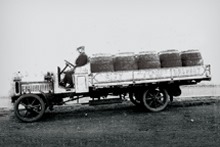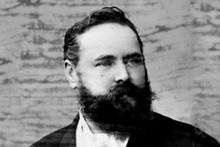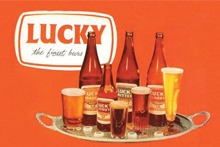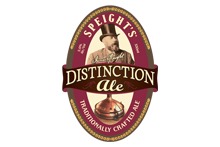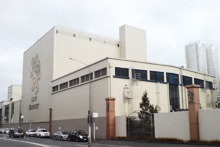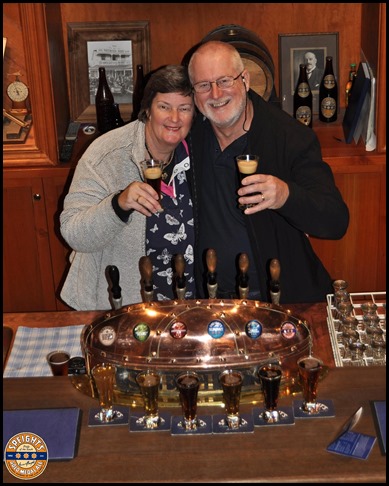Speight's Museum

|
Speight's Brewery Museum Tour, Dunedin
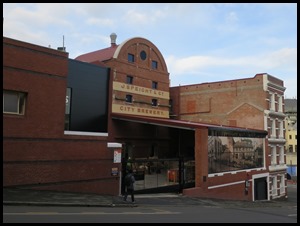  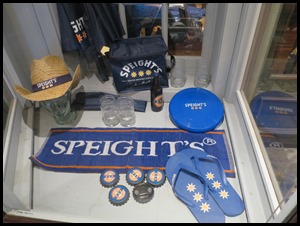 Mable parked outside, we bimbled in to
Speight’s Brewery for our afternoon tour. Graham welcomed us and as we had a few minutes to spare we
looked around the in-house grockle shop. We were told
that the ‘Danger’ sign was to do with the company having to have major standard
work to the inner face of all the walls, although Dunedin does not suffer from
earthquakes it is a requirement of all buildings to be of Government approved
‘standard’. The fact the building has happily
stood for over a hundred years is by the by. Off we went on the museum bit of
our tour.
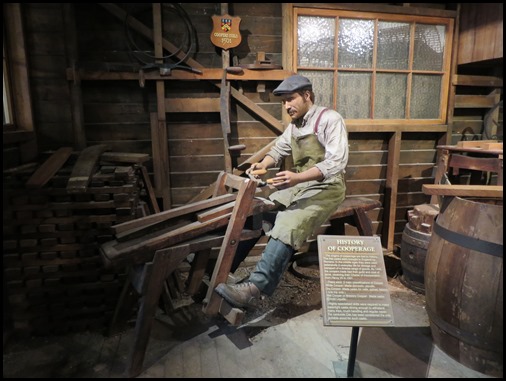 We began with the history of the cooper. The origins of cooperage are lost to history.
The first casks were brought to England by the Romans. In the middle ages they
were used extensively in everyday life for storage and transport of a diverse
range of goods. By 1440, the coopers trade had their guild and coat of arms
receiving their Charter of Incorporation from Henry VII in 1501. There were three main classifications of Cooper:-
White Cooper: Made domestic
utensils.
Dry Cooper: Made casks for nails, spices,
fabrics – for one trip only.
Wet Cooper or Brewery Cooper: Made casks
to hold liquids.
 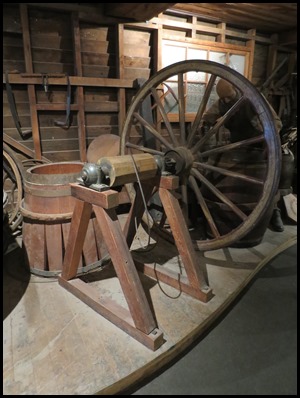 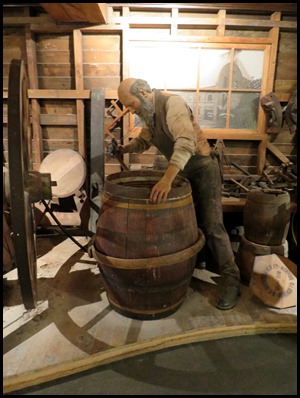 Highly specialised skills were required to
make watertight casks strong enough to withstand many trips, much handling and
regular repair. For centuries oak has been considered the only suitable wood for
such casks. First the angled pieces were
cut, put in the steamer, rolled to and pulled to shape while still hot and
moist, set with metal rings and checked for leaks. Amazing, all held
together by the shape of the slats, not a nail used.
Today there are a mere handful of coopers
left. Within the last few generations an industry employing tens of thousands of
craftsmen has all but disappeared. The Speight’s Cooper Shop had as many as
thirty men employed in the 1920’s when Speight’s was shipped throughout the
country in barrels. The wooden cask was the only accepted method of storage and
transport of beer until the late 1950’s when metal casks were introduced. A few
years later beer tankers were introduced. These innovations spelt the end of the
coopers shop.
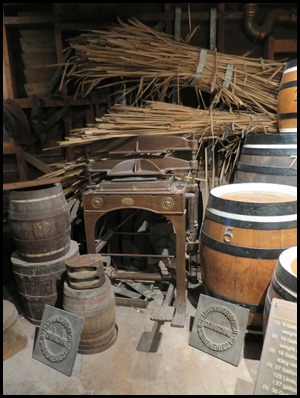 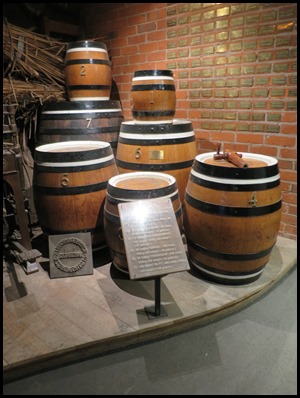 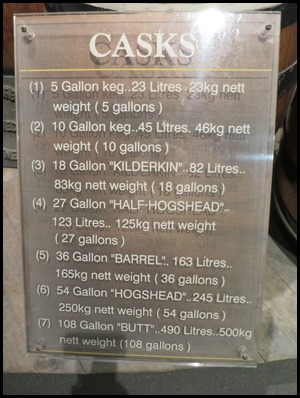 Should a barrel ever leak in the checking
process, the metal rings at the top were loosened, thin strips of reed added between the offending pieces and the rings
tightened. The different sizes of barrel and their names, unchanged since the year dot. Above the
barrels we saw small brass plaques – these as a ‘thank you’ to all the staff
members past and present who have donated bits and bobs to the museum.
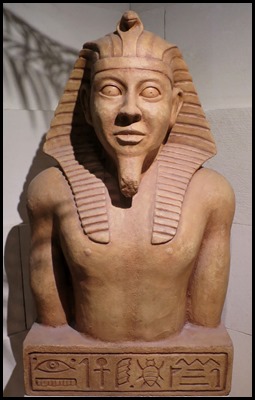   Upstairs we went. In
Egyptian times beer was brewed from bread: This was done by separating
the grain from the stalks by threshing. Pounding the grain. Grinding to produce
flour. Preparing dough. Kneading the dough. Baking in an oven consisting of
three large stones. Ladling out mash produced by soaking the bread. Straining
the mash. Filling fermenting jars. Capping or sealing the fermenting jars.
Storing, during which a secondary fermentation takes place.
In Ancient Babylon brewing was an
important industry. The oldest inscribed clay tablet in existence, which dates
back to the Babylonia of 6000 B.C., depicts the brewing of beer for sacrificial
purposes. By 4000 B.C. the Babylonian man-in-the-street was able to take his
pick from sixteen different kinds of beer. King Hammurabi, author of the worlds
oldest code of law, regulated the manufacture of beer.
The brewing and enjoyment of beer is as
old as civilisation itself. In the Pharaoh’s Egypt, brewing was, even then, a
recognised and respected profession. Beer, of which there were four or five
varieties, was an important part of the daily diet. It is recorded in ancient
inscriptions that the labourers who toiled in building the pyramids received
daily four loaves of bread and two jugs of beer. Other inscriptions depict
feasts in which beer was the principle refreshment. The ancient Egyptians also
made offerings of beer to their gods, for they attributed its invention to the
Sun-god Ra. The Pharaoh Rameses III, in 1200 B.C., prides himself in his temple
inscriptions on having consecrated to the deities precisely
466,303 jugs of beer.
The Ancient Britons enjoyed their beer. In
the first century A.D., the Greek traveller Dioscorides wrote that the Britons
and the Heberni – the Irish, drank a brew called Courni made from barley, while
a writer in fifth century records the methods by which the druids prepared beer.
The Romans became fond of this beer when they occupied the land. The later
invaders – the Anglos, the Saxons and the Jutes, were influenced by the Britons
and shared their enthusiasm for beer.
In the Middle Ages all monasteries had
their own brew houses, just as they had their own infirmaries and schools. The
brewery was usually next to the bakery which used the beer yeast for baking
bread. The monks used the symbols XX and XXX on their
barrels as a guarantee of the quality of the contents. Later, when brewing
companies were formed in the 17th and 18th centuries, the symbols were retained
to denote the strength of beers. Ale was the staple drink of the monasteries
whose monks felt, it is recorded, that “Water, sole by itself, is not good for
an Englysshe man” and wine was too expensive. The X’s were also useful for the
barmen and wenches who could not read or write, customers could ask for a XX or
a XXX and everyone would understand.
It is an urban myth – or true story
that Vikings cut the head off their victims, formed a
drinking vessel and toasted each other. The common toast in Scandinavian lands,
"Skøl!" sounds, superficially at least, like the English ‘skull’. The latter
derives from from the Old Norse skalli "bald
head, skull," whereas skøl derives from the Old Norse skál - a bowl, via the Proto-Germanic skéló. Whatever you choose to believe...........
What is fact is the recipe used by
Captain Cook. Captain Cook, on his second visit to New Zealand, made landfall at
Dusky Bay, which he entered on the 26th of March 1773. There he took immediate
steps to restore the health of the Resolution’s crew - still fairly good despite
the long voyage on hard rations - by gathering a rich harvest of fish and wild
fowl..... and establishing a brewery. In this was brewed what is recorded as
“Spruce Beer”. It was actually mad from manuka and rimu foliage. Cook mistook
rimu for spruce he knew when he fought against the French in Canada. This rimu
beer was perhaps not very tasty, but it was valuable for the anti-scurvy
elements which it contained.
In the next room was a wonderful old,
hand painted ‘through the back’ mirror. Mr. Speight himself. His daughter’s fireplace, although very beautiful, his daughter did not
care for it as in the flickering candlelight, it looked like the birds were
flapping their wings.
   An office, just
as it would have looked.
 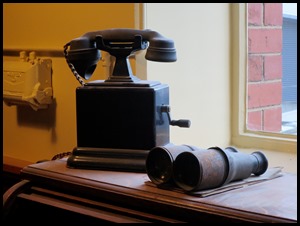 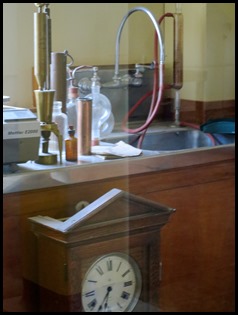 An original Royal Insurance Company Fire Policy, a great telephone.
Next door will house a mock up of the
laboratory.
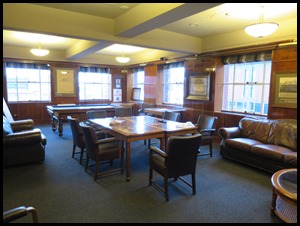 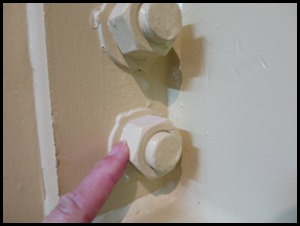 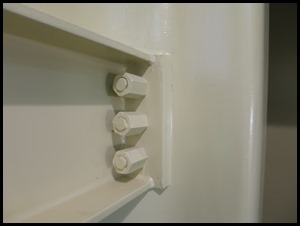 The boardroom. The
nuts. The beams of the new internal earthquake
supports.
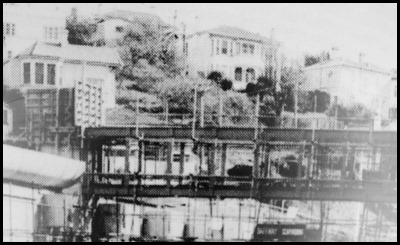 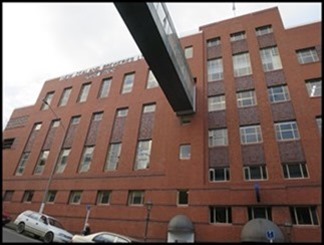 We go up to the Connecting Bridge over
the road. The bridge gave access from the brewery
building to the bottling house which opened in 1970 at a cost of three million
dollars.
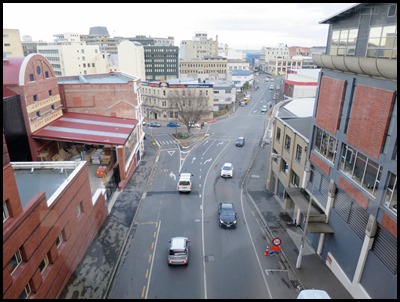  We look down the hill
toward town, in olden days the workers would have
been able to see the docks. Looking uphill we see
what was the stables on the right. The horses were kept on the ground floor, the
hay loft on the upper, they had their own fireplace to keep them warm and the
original chimney can be seen. The building is now rented
out.
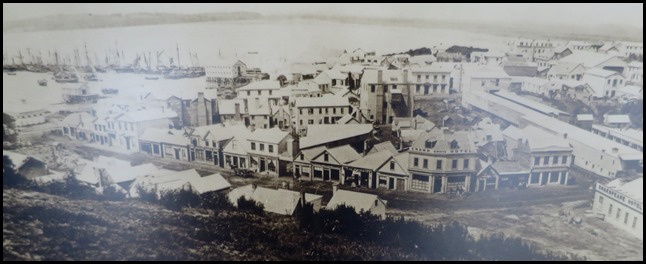 A magnificent panorama
of early Dunedin highlighting the Crown and
Shakespeare Hotels. Note the position of the wharf and the number of ships in
the port.
 This picture taken
around 1897 shows the arched roof of the enlarged
malthouse – to the right of the brewhouse building, and the three storeyed
Britannia building immediately to the left of the chimney.
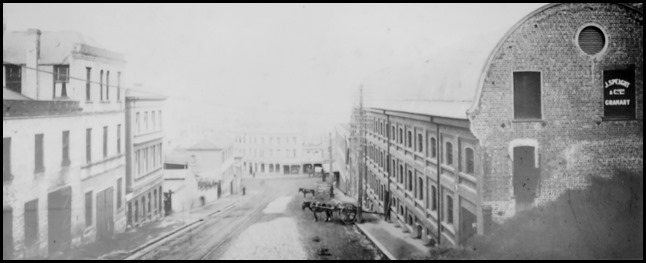 The huge
malthouse / cellar building on the right was erected in 1898, sadly,
destroyed by fire in 1940.
 The tram lines lead up Rattray Street past Shamrock Auction Rooms, past the
brewery to the distinctive twin towers of St. Joseph’s Catholic
Church.
 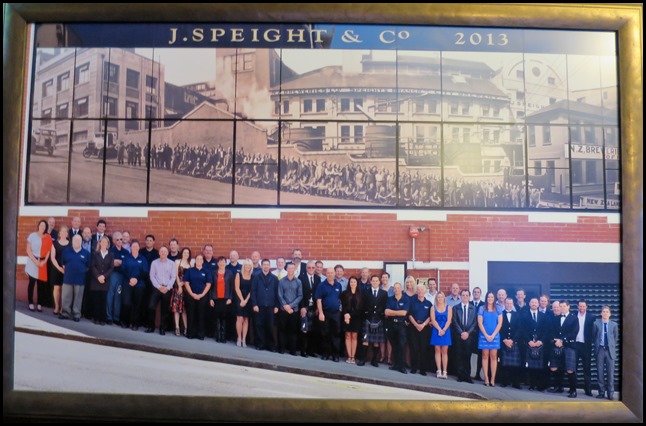 The original staff
photograph and recreated in 2013.
A Potted
History
1876: Speight’s is Born. James Speight, Charles Greenslade and William Dawson hand in their notices at Well Park Brewery to establish their own brewery in Dunedin's Rattray Street. Dawson is the brewer, Greenslade the maltster and Speight the businessman. 1880: Speight’s Win Gold Medal. Speight's Ale gets two gold medals at the Melbourne Exhibition and a new name Speight's Gold Medal Ale. Back in Dunedin, a new brew-house is built. 1887: Biggest New Zealand Brewery. Speight's becomes the biggest brewery in the country, exporting to Australia, Fiji and Tahiti. Legendary founder James Speight passes away on 16 August. William Dawson becomes Mayor of Dunedin at thirty five.
1913: First Female Employee. Norah McGhie becomes Speight's first full-time female employee. Speight's also buys a motorised cart, called a 'truck', for delivering casks to local pubs. 1923: William Dawson Dies. The threat of prohibition sees Speight's and nine other breweries join forces to become New Zealand Breweries. One of the founders, William Dawson dies. 1960: Speight’s Lucky Beer. Some genius at New Zealand Breweries decides it would be a good idea to re-brand all their beers with the same name. And it's not Speight's. The Lucky Beer brand lasts a full two months before sanity prevails and Speight's and the triple star are back.
1977: Speight’s Sponsors Rugby. Speight's takes on the first of many sports sponsorships with the Dunedin senior rugby competition becoming the Speight's Championship. New Zealand Breweries becomes Lion Breweries. 1984: Speight’s Cans Launched. Speight's cans are launched. The beer is brewed in Dunedin and sent by train to Christchurch to be canned. Some of the cans (quite a few) then catch the train back to Dunedin. 1994: Distinction Ale Introduced. Speight's Distinction Ale is launched to celebrate 120 years of the Speight's Brewing Co.
1999: First Alehouse Opened. First Speight's Ale House opened by Prime Minister Jenny Shipley as a photo opportunity during the election campaign. 2001: Auckland Joins In. Speight's becomes so popular that extra production starts in Auckland to keep up with demand. The Dunedin Brewery carries on brewing regardless. 2014: We visit Speight’s Brewery. We enjoy our tour of the Museum. Bimble around the Brewing Floors and sample five beers and a ginger ale.
Cheers.
ALL IN ALL SUCH A LONG HISTORY OF
SUCCESS
INTERESTING AND
TASTY |


